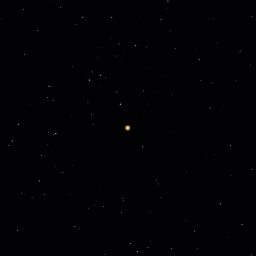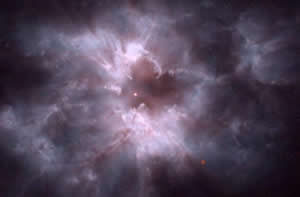The Fate of the Sun

Click on image to watch animation.
|
As the helium core continues to contract from gravity, it will soon get dense and hot enough to fuse three helium particles into carbon. At the same temperature, the carbon can also fuse with another helium to form oxygen. Since the Sun is not very massive compared to some stars, it will never get hot enough in the center to create elements much heavier than carbon and oxygen. These elements will collect in the center of the star. Later it will shed most of its atmosphere, creating a planetary nebula, and emerge as a hot white dwarf star.
Nearly 99 percent of all stars in the galaxy will end their lives as white dwarfs. By studying the stars that have already gone through this process, we can learn about the fate of our own Sun.









